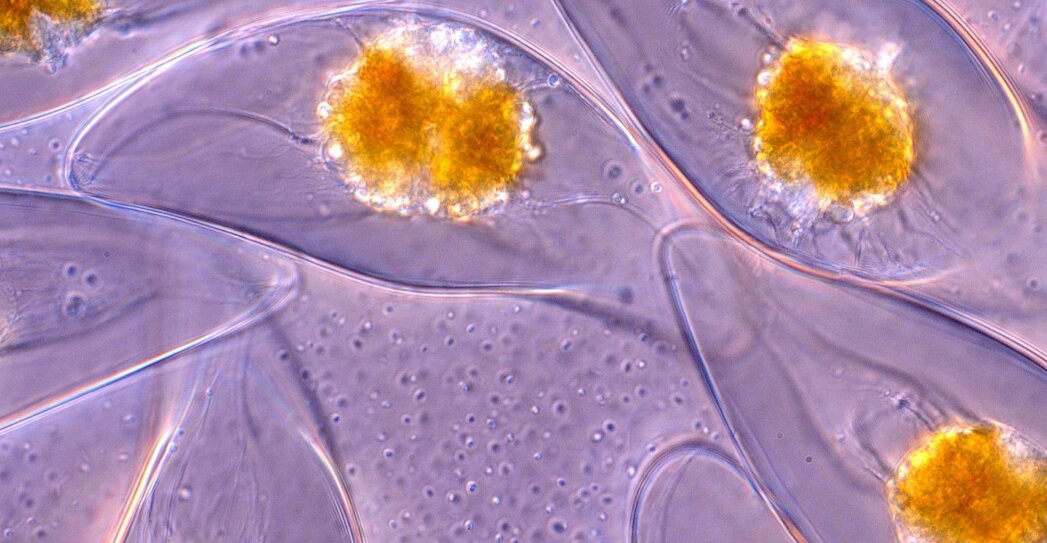Every few years, microscopic organisms called dinoflagellates flourish and transform
International team led by cambridgeUniversity, has developed unique experimental tools based on micromanipulation and high-speed imaging. This enabled scientists to see the mechanisms of light production at the level of individual cells. Visualizations showed how a unicellular organism of the species Pyrocystis lunula produces a flash of light when its cell wall is deformed by mechanical forces. Through systematic experiments, they found that the flash brightness depends on both the depth of deformation and the speed with which it arises.
 Researchers have shown how unicellularan organism of the species Pyrocystis lunula produces a flash of light when its cell wall is deformed by mechanical forces. Through systematic experiments, they found that the flash brightness depends on both the depth of deformation and the speed with which it arises. Courtesy: Maziyar Jalaal / Cambridge University
Researchers have shown how unicellularan organism of the species Pyrocystis lunula produces a flash of light when its cell wall is deformed by mechanical forces. Through systematic experiments, they found that the flash brightness depends on both the depth of deformation and the speed with which it arises. Courtesy: Maziyar Jalaal / Cambridge University
Known as the “viscoelastic” response, itbehavior is found in many complex materials, such as liquids with suspended polymers. In the case of organisms such as Pyrocystis lunula, known as dinoflagellates, this mechanism is most likely associated with ion channels. They are special proteins distributed on the cell membrane. When the membrane is loaded, these channels open, allowing calcium to move between cells in the cell. This causes a biochemical cascade that produces light.
Despite decades of scientific research, mostly in the field of biochemistry, the physical mechanism by which fluid flow triggers light production remained unclear.
Raymond Goldstein, Professor of Complex Physical Systems in the Schlumberger Department of Applied Mathematics
The results of scientists show a physical mechanism,by which the flow of liquid starts the production of light. In addition, visualizations clearly demonstrate how “elegant” decision-making can be at the level of one cell, the researchers say.
Ocean bioluminescence is used to protect against attack and is involved in the mating process. In the case of dinoflagellates, they use light to scare away predators.
Read also
Germany became the first major economy to abandon coal and nuclear power
It turned out that made the Mayan civilization leave their cities
Look at the bare core of a giant planet: scientists have found this for the first time